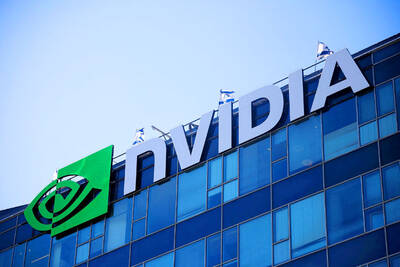The European Commission demanded an explanation Friday from US authorities over how 1,000 tonnes of genetically-modified maize entered the EU despite a ban.
EU consumer protection commissioner Markos Kyprianou condemned the way the maize, developed by Swiss agribusiness giant Syngenta, had been let onto the European market.
"The European Commission deplores the fact that a GMO [genetically modified organism] which has not been authorized through the EU's comprehensive legislative framework for GMOs, nor by any other country, has been imported into the EU," he said.
"We are writing to the US authorities asking them to guarantee, by taking the appropriate measures, that present and future exports of maize to the EU do not contain GMOs which are not authorized for the EU market," he added.
The EU's executive arm is also seeking clarification from Syngenta about the import of the unauthorized genetically modified maize type Bt10.
It said that an estimated 1,000 tonnes of Bt10 food and feed products may have entered the EU labelled as a different form of maize, Bt11, since 2001, the date from which the inadvertent release of Bt10 started.
Syngenta, formed from the 2000 merger of Zeneca and Novartis, admitted last month having accidentally sold to the US genetically modified maize that had not been approved by US authorities.
The company said the essential protein of its Bt10 maize variety is identical to its Bt11 line, which has been approved for farming and consumption in the US, EU and Japan since the late 1990s.

Taiwan Semiconductor Manufacturing Co (TSMC, 台積電) last week recorded an increase in the number of shareholders to the highest in almost eight months, despite its share price falling 3.38 percent from the previous week, Taiwan Stock Exchange data released on Saturday showed. As of Friday, TSMC had 1.88 million shareholders, the most since the week of April 25 and an increase of 31,870 from the previous week, the data showed. The number of shareholders jumped despite a drop of NT$50 (US$1.59), or 3.38 percent, in TSMC’s share price from a week earlier to NT$1,430, as investors took profits from their earlier gains

In a high-security Shenzhen laboratory, Chinese scientists have built what Washington has spent years trying to prevent: a prototype of a machine capable of producing the cutting-edge semiconductor chips that power artificial intelligence (AI), smartphones and weapons central to Western military dominance, Reuters has learned. Completed early this year and undergoing testing, the prototype fills nearly an entire factory floor. It was built by a team of former engineers from Dutch semiconductor giant ASML who reverse-engineered the company’s extreme ultraviolet lithography (EUV) machines, according to two people with knowledge of the project. EUV machines sit at the heart of a technological Cold

AI TALENT: No financial details were released about the deal, in which top Groq executives, including its CEO, would join Nvidia to help advance the technology Nvidia Corp has agreed to a licensing deal with artificial intelligence (AI) start-up Groq, furthering its investments in companies connected to the AI boom and gaining the right to add a new type of technology to its products. The world’s largest publicly traded company has paid for the right to use Groq’s technology and is to integrate its chip design into future products. Some of the start-up’s executives are leaving to join Nvidia to help with that effort, the companies said. Groq would continue as an independent company with a new chief executive, it said on Wednesday in a post on its Web

CHINA RIVAL: The chips are positioned to compete with Nvidia’s Hopper and Blackwell products and would enable clusters connecting more than 100,000 chips Moore Threads Technology Co (摩爾線程) introduced a new generation of chips aimed at reducing artificial intelligence (AI) developers’ dependence on Nvidia Corp’s hardware, just weeks after pulling off one of the most successful Chinese initial public offerings (IPOs) in years. “These products will significantly enhance world-class computing speed and capabilities that all developers aspire to,” Moore Threads CEO Zhang Jianzhong (張建中), a former Nvidia executive, said on Saturday at a company event in Beijing. “We hope they can meet the needs of more developers in China so that you no longer need to wait for advanced foreign products.” Chinese chipmakers are in